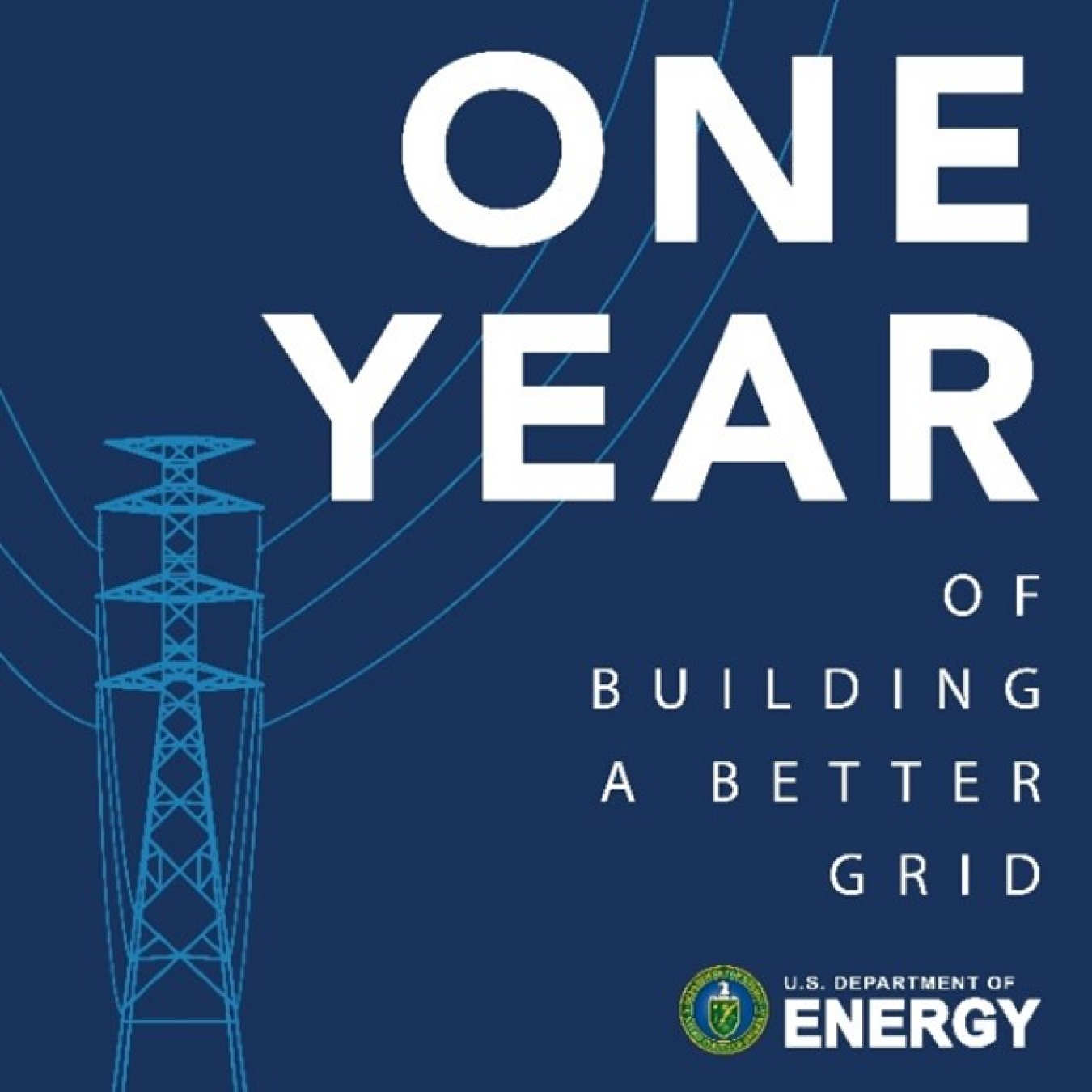Today, we celebrate one year of #BuildingABetterGrid! Since its launch, the Building a Better Grid Initiative has set in motion the nationwide development of upgraded transmission and distribution lines and a more modern, flexible, and resilient grid.
January 12, 2023
One year ago, the Biden-Harris Administration announced the Building a Better Grid Initiative to identify national transmission and distribution needs and support critical infrastructure deployment to create a cleaner and more resilient and reliable grid. Here’s how GDO is putting it into action.
What will it take to reach 100% clean electricity and a zero emissions economy? While multiple pathways exist to reach these goals, all require upgrading and expanding the Nation’s electric grid. Specifically, turning these goals into reality requires expanding our transmission and distribution systems by 60% by 2030 and tripling them by 2050, while also ensuring both new and existing systems are resilient and prepared to help get clean energy where it’s needed, when it’s needed.
Recognizing this, one year ago the Biden-Harris Administration launched the Building a Better Grid Initiative. The focus: To identify national transmission and distribution needs and support the deployment of interstate, high-voltage lines that bolster grid reliability and resilience, connect clean energy resources to where the power is needed, and create good-paying jobs across the country. So, what does this look like one year into the work?
Taking Stock One Year In
Building on grid research and development efforts happening across DOE offices, the Grid Deployment Office (GDO) is administering the Building a Better Grid Initiative through four main efforts: enhancing transmission planning; increasing federal collaboration via robust engagement; streamlining permitting and siting processes; and deploying federal financing tools. In this work, GDO is leveraging previously enacted authorities and funding and employing a wide range of tools and resources, with support from the Bipartisan Infrastructure Law (BIL) and Inflation Reduction Act to accelerate grid modernization, expansion, and resilience. Together, these efforts focus not on any singular project or effort, but on a holistic, national, coordinated push to enhance the grid comprehensively.
When it comes to transmission planning, success will require a deliberate and innovative approach. This means identifying long-term, flexible, and interregional solutions to meet national needs and interests. GDO is currently directing a number of transmission planning efforts, including the National Transmission Needs Study (Needs Study) and the National Transmission Planning Study (NTP). Formerly known as the National Electric Transmission Congestion Study, the Needs Study is a triennial state-of-the-grid report that will identify high-priority national transmission needs while providing information about capacity constraints and congestion on the electric grid. Previously limited to considering only historic congestion, the BIL-supported Needs Study will consider both historic and anticipated transmission needs to better support increasing renewables and electrification. Through the NTP, GDO is collaborating with industry stakeholders, communities, and regional and local governments to help identify pathways for necessary large-scale transmission system buildouts that will meet regional and national interests. With a strong focus on stakeholder engagement, the NTP is gathering feedback and helping to identify pathways for necessary large-scale transmission system buildouts).
These studies, as well as other GDO work, shows the Department of Energy’s firm commitment to engage robustly and early with a wide range of stakeholders, including other Federal agencies, States, Territories, Tribal Nations, regional grid entities, local governments, industry representatives, unions, local community groups, environmental justice organizations, and more. In 2022, GDO issued a Request for Information (RFI) on resources needed to improve grid resilience and bolster implementation; sought statements of interest from Tribal governments, enterprises, utilities, and American Indian communities to help inform the NTP Study; and convened Atlantic offshore wind (OSW) transmission stakeholders to identify strategies to support sustainable, equitable development of OSW transmission while minimizing oceanic impacts and creating benefits for coastal and underserved communities.
Shifting from planning to deployment, GDO recently announced several new financing and facilitation mechanisms, including the $10.5 billion Grid Resilience and Innovation Partnerships (GRIP) program, the $2.5 billion Transmission Facilitation Program (TFP), and the $2.3 billion Grid Resilience State and Tribal Formula Grants program. Together, these programs represent the largest single direct federal investment in critical transmission and distribution infrastructure.
The GRIP program focuses on enhancing grid flexibility and improving system resilience against increasing threats of extreme weather and climate change. The first round of funding opened for proposals in November 2022 for fiscal years 2022–2023.
The TFP is an innovative revolving fund to help overcome the financial hurdles facing large-scale, new transmission lines, upgrades of existing transmission lines, and, in select regions, the establishment of microgrids. Through the program, DOE is authorized to borrow up to $2.5 billion to assist in the construction of high-capacity transmission lines that otherwise would not get built or to increase the capacity of already planned lines. The first phase of this program is focused on capacity contracts and the submission deadline is February 1, 2023. Subsequent phases will include loans and public-private partnerships.
The grid resilience formula grants program will distribute funds over five years to States, Territories, and Tribes to strengthen and modernize America’s power grid against wildfires, extreme weather, and other natural disasters that are exacerbated by the climate crisis. Allocations are based on a formula that considers population size, land area, probability and severity of disruptive events, and a locality’s historical expenditures on mitigation efforts. The deadline for application for both year one and year two funding is March 31, 2023.
Looking Ahead
What’s next for the Building a Better Grid Initiative? GDO and DOE remain committed to working hand in hand with local community leaders to meet regional and national energy needs and to deploying financing and support that makes energy cleaner, cheaper, more reliable, and more resilient. We invite you to join us in our weeklong celebration (January 17–20) as we dig deeper into progress to date and key steps ahead. Follow along via GDO’s LinkedIn account and the GDO website.

